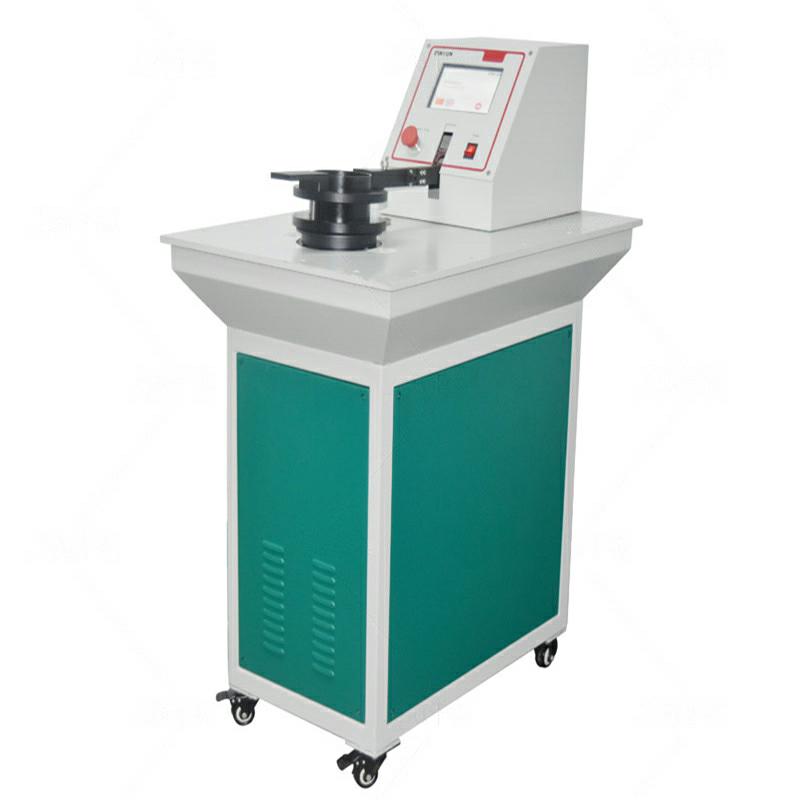Air permeability tester

Air permeability tester
Gas permeability tester, also known as gas permeability tester or differential pressure gas permeability tester, is a device used to measure gas permeability, diffusion coefficient and other parameters of packaging materials such as plastic films, composite films and sheets. It is a key instrument for barrier properties testing and is widely used in food, pharmaceutical, packaging and electronics industries.
Test Principle
A pre-treated sample is placed between upper and lower test chambers and clamped. First, the low-pressure chamber (lower chamber) is vacuumed, then the entire system is evacuated. Once the specified vacuum level is reached, the lower chamber is closed and the high-pressure chamber (upper chamber) is filled with test gas at a specified pressure. A constant (adjustable) pressure differential is maintained across the sample. This pressure gradient causes gas to permeate from the high-pressure side to the low-pressure side. By monitoring the pressure within the low-pressure side, the various barrier properties of the tested sample are determined.
Operation Instructions
Environmental Conditions: Ensure that the laboratory environment meets the requirements specified in the instrument's manual, including temperature, humidity, and air pressure.
Equipment Inspection: Check that the instrument's power supply is functioning properly, that all components are securely connected, and that the test area is clean.
Sample Preparation: Prepare samples of appropriate size and shape according to the test standard or requirements, ensuring that the sample surface is clean and undamaged.
Set Test Parameters: Power on the instrument, access the operation interface, and set the test pressure, test time, gas type, and other parameters.
Sample Installation: Install the sample in the test fixture according to the instrument's specifications, ensuring that the sample is flat and wrinkle-free.
Start Test: Click the "Start Test" button to automatically initiate the test.
Data Recording and Analysis: After the test, the data is recorded and a gas permeability report is generated, analyzing the sample's gas permeability.
Maintenance
1. Regular Cleaning
Regularly clean the exterior and interior of the tester, especially the sensor and flow path. Wipe the exterior with a soft cloth and use a dedicated cleaning tool to clean the sensor surface to prevent dust and contaminants from affecting measurement accuracy. The sensor of some testers may require regular replacement or cleaning to maintain sensitivity and accuracy.
2. Check the Gas Lines and Connectors
During measurement, the gas flow path must remain unobstructed. Regularly check the instrument's gas lines and connectors to ensure there are no leaks or blockages. Any leaks or blockages will cause measurement errors and affect the accuracy of test results.
3. Check the Battery and Power Supply
For portable gas permeability testers, regularly check the battery charge and power supply to ensure the device is always functioning properly. It is best to remove the battery when not in use for extended periods to prevent leakage or damage.
4. Prevent Overloading
Avoid operating the tester above its maximum load for extended periods. Overloading not only affects test accuracy but can also damage the sensor and internal circuitry. Therefore, strictly follow the recommended operating range in the instrument's manual to avoid overloading. 5. Environmental Condition Control
The instrument's accuracy may be affected by environmental factors. High temperatures, humidity, or dusty environments can affect its performance. During use, ensure that the temperature and humidity in the test environment are within the instrument's recommended range. If possible, use an air conditioner or humidifier to control environmental conditions.
6. Regular Inspection and Maintenance
In addition to daily cleaning and inspection, regular inspection and maintenance are also required. Instruments used for extended periods may experience issues such as sensor aging and flow meter inaccuracy. These issues require in-depth inspection and repair by a professional technician.
7. Software Updates
For software-controlled testers, it is crucial to regularly check and update the instrument's operating software. Software updates can fix known bugs and improve performance. Ensure that the instrument's operating system and software are up to date with the latest manufacturer-provided versions.

2025-08-04 13:03

